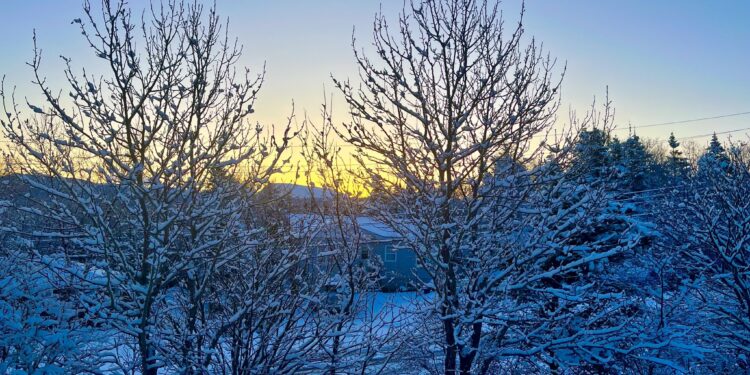Saman Khan / Nischal Sanghavi
India:- Recent record-low and delayed snowfall in several areas of Indo-Pak region has raised concerns about water security, exacerbating existing challenges in the face of climate change. The cold front gripping the northern areas of both countries is notably marked by diminished snowfall this season, a trend attributed to the impacts of climate change. The iconic mountain peaks of the Hindu Kush Himalaya (HKH) region, typically adorned in a winter coat of snow, remain conspicuously bare this year, particularly in the western Himalayas. The dearth of snowfall is ringing alarm bells for farmers, whose livelihoods depend heavily on agriculture. Apart from huge effects on citizens and commerce in the region, farmers are the most affected, as low snowfall has a direct and severe impact on agriculture. This is particularly acute for both India and Pakistan, which are agriculture driven economies at large.
According to Faisal Moin who works with ECMOD, “In Pakistan, snowfall takes place in regions of Gilgit-Baltistan and a good part of Baluchistan. In fact, snowfall impacts the economy of not only these regions, but of entire country. Both Pakistan and Afghanistan have high dependency on snowfall to fulfill its water needs throughout the year. As per statistics 80% of water needs in Pakistan is fulfilled by water from glaciers, rest 20% from monsoon rains. Usually in ‘La Nina’ years there is scarce snowfall, while during ‘El Nino’ years the snowfall is appropriate. However, this year in spite of being El Nino year, there is scarce snowfall. Less snowfall will have huge impact on people and economy. The two main factors responsible for scarce rainfall is high temperatures and western disturbances. This year western disturbances were very week during Jan and Feb. It got some strength in March, due to which we experienced snowfall in March. The same is also applicable for certain regions of India like the state of Himachal Pradesh.
Snow serves as a vital source of sustenance in mountainous regions, typically accumulating from October to March, especially in the western HKH region. Its presence acts as a protective layer, shielding dormant crops, facilitating root growth, preventing frost damage, and curbing soil erosion. However, reduced snowfall and erratic precipitation patterns pose significant ecological threats, impacting water resources and agroforestry across the region. The temperatures have been warmer than average this season – a likely reason for the below-normal snow cover. “Even if there is significant snowfall in February and March as temperatures start to rise, it will probably be too little, too late to make up for the existing deficit”, a weather expert says.
Mohammed Hussain, Met B at Indian Meteorological Department, Kashmir says that, “there are so many changes that one can notice directly if there is late snowfall. First and foremost, if there is late snowfall, the snow accumulation on the glacier doesn’t take place. If snowfall happens early, the snow accumulated on glaciers lasts up to July. So, if there is early snowfall, there will be no scarcity of water, as water will be available throughout the season from melting glaciers. Kashmir is into horticulture farming. The flowering of these plants takes place in February or March. If snowfall & rainfall is in time, there will be nice flowering of these plants and the crop yield will be as per expectations. Late or no snowfall will badly affect the flowering of these plants and the yield of horticulture crop reduces to 10-20% only. This year also the snowfall is delayed and up to Mid-March, the flowering has still not happened.”

According to Scientist B, IMD Uttarakhand, Rohit Thapliyal, “late snowfall can badly affect the Apple plantation which is the main crop of the region. Snowfall creates water reservoirs that provides water to rivers and helps people with water during the summer season.”. According to the data from forest survey of India, there have been 2050 incidents of forest fires between October 2023 and January 2024 – an increase of seven times this winter compared to last year. Forest fires drastically increase due to lack of precipitation because of delayed snowfall.
It is clearly evident that Snow is an important source of livelihood in the mountain regions. Snow typically begins accumulating in October or November and continues through to March, particularly in the western HKH region. Snow cover usually acts as an insulating blanket, shielding dormant crops, allowing root growth, preventing frost penetration, and protecting soil from erosion. Reduced snowfall and erratic rains across the Himalayan region have the potential to cause adverse ecological impacts in the region, including on water and agroforestry.
The reasons for low and delayed snowfall could be the number and intensity of western disturbances have been significantly lower than average & overall warming trend due to climate change is likely playing a role, leading to higher average temperatures even during winter. This makes it harder for snow to accumulate, even if snowfall does occur.
Air quality modelling analyst Arshini Saikia who is based at Kathmandu says that, ”over the last 10 years we are seeing a warming trend of temperature over the Himalayan region. In fact, the temperature is rising over the globe. This heavily affects the snowfall in the region. According to Saikia’s research of last 30 years the trigger in temperature during December this year has affected scarce and delayed snowfall this year. Air pollution is one of the main responsible factors for air pollution and it is also very obvious that air pollution happening in any of the countries will actually affect the entire region, not just that country only. To reduce the air-pollution we have to take into account all the emission sectors across the entire HKH region and we have to think of ways to mitigate these emissions. Thinking of any activities at only local scale will not help. This is a regional problem. If the problem persists it might be a huge disaster for all the concerned regions in Asia, as Himalayan snow is considered to be one of the water towers for several countries in Asia. Hence, to harmonize this issue we need to come up with one solution that is applicable to many regions.”
Future Concerns:
The lack of sufficient snow accumulation means that when the snow melts later in the year, there will be less ‘runoff’ – excess water which flows across the surface of the land and into nearby water bodies. With fewer snowfall events, there will be less snow on the ground, with decreased snow depth, meaning that there will be less melted snow running into rivers and streams when the weather warms up. So less snowfall over time could substantially reduce water for agriculture when it is needed most.
Mountain communities both side of cross border already face numerous challenges, including crop failure, livestock deaths, fodder shortages, loss of life and property due to disasters, and psychological distress. The extremely dry winter follows years of below-average snowpack accumulation and is expected to further strain water resources this spring and summer. With rivers fed by mountain runoff potentially running dangerously low, farmers may be unable to irrigate fields or sustain livestock. Food insecurity, economic losses, and migration could intensify without adequate adaptation measures. For example, the high-altitude region of Central Hunza in northern Pakistan and the famous tourist spot Murre Hills would generally be meters deep in snow around this time of the year. However, the region has just seen a snowflake in late January, which has been warmer than usual.
Data & Statistics:
The 2023 annual climate summary report, as presented in the monthly Climate Bulletin of the European Centre for Medium-Range Weather Forecasts (ECMWF) in January 2024, summarizes how El Niño – La Niña and Western Disturbance contributed to below-normal precipitation in the northern parts of India, Afghanistan, and Pakistan.
On average, annual snowmelt contributes approximately 23% of the flow of the 12 major river basins that originate high in the HKH and flow downstream to farmlands and cities, with snowmelt runoff from individual basins varying from 5 to 77%. The combination of seasonal snowmelt and glacial melt play a key role in river hydrology and in daily life downstream. In addition, snow helps to sustain glaciers, while snow cover helps regulate the temperature of the earth’s surface, and variations in snow cover can affect regional weather patterns. The cooling associated with moist spring soils and a heavy snowpack in
Eurasia is believed to shift the arrival of the summer monsoon season and influence its strength and duration.
The region overall has been experiencing extended monsoons in recent years, characterized by high and intense rainfall. The 2023 monsoon in eastern Himalaya (east Nepal, Sikkim in India, Pakistan) resulted in disastrous flooding, accompanied by numerous landslides. Further north, noticeable changes have been occurring, including a shift in precipitation phases. Areas that traditionally experienced snowfall are now seeing more frequent rain.
Although the data gap remains a significant concern in the region, it is imperative to maximize the utilization of available data and accelerate the adoption of adaptive measures to mitigate future risks. Decisions regarding water management must be made promptly to address both flood risks and water requirements. To alleviate future water stress and associated risks, adaptive measures should prioritize the optimization of food production, improvement of irrigation networks, and the promotion of regional Disaster Risk Reduction strategies. Additionally, it’s crucial to leverage the synergies between water and food security needs to ensure sustainable solutions.
In conclusion, proactive measures are imperative to mitigate the impacts of low snowfall and ensure water security in the Indo-Pak region. These measures should focus on optimizing food production, enhancing irrigation networks, and promoting disaster risk reduction strategies. Only through concerted action can both countries navigate the challenges posed by dwindling snowfall and climate change. This problem can best be resolved by a joint effort by both countries, because environmentally, just like smog phenomena, what happens in India affects people in Pakistan also and what happens in Pakistan, can may cause of snowfall imbalance in India’s Kashmir, Himachal etc.






































